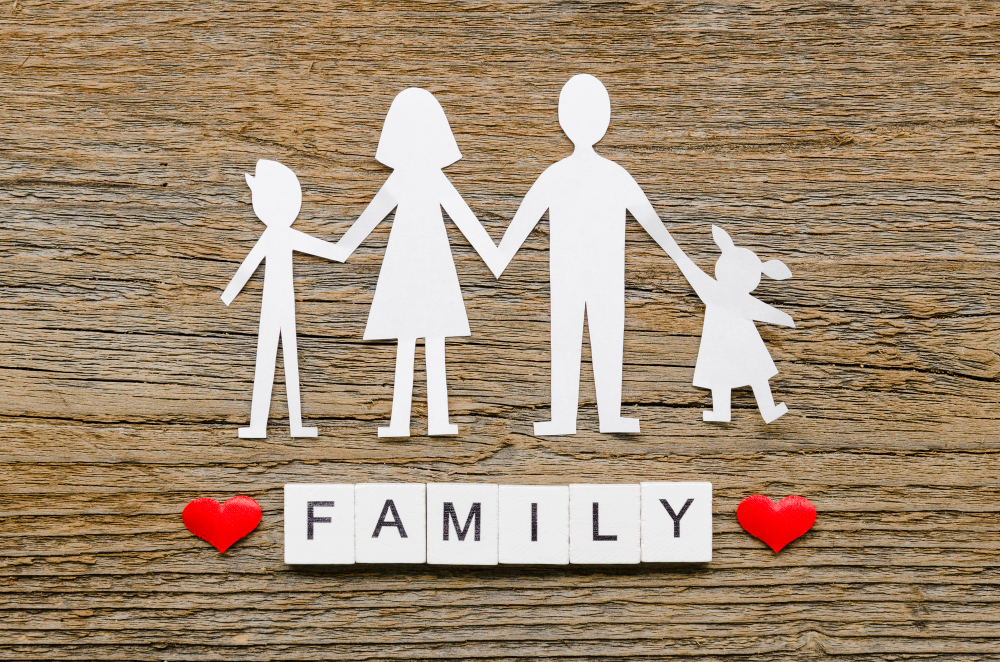Shocking Changes in Family Structures: What You Need to Know!

In the past few decades, the traditional concept of a family has undergone tremendous transformations. This evolving landscape of family structures and dynamics reflects broader societal changes. It has far-reaching implications for individuals, communities, and society. This blog will explore the various types of modern family structures, the factors driving these changes, and their impact on family dynamics and relationships.
Types of Modern Family Structures
Nuclear Families
The nuclear family, consisting of two parents and their children, has long been considered the traditional family model. While this structure remains prevalent, it is no longer the only or even the most common family arrangement in some societies. The rise of diverse family forms has led to re-evaluating what constitutes a family. Moreover, the nuclear family has adapted to modern times, with parents sharing responsibilities more equally than in the past.
Shared Responsibilities: Both parents often contribute to household income and caregiving.
Adaptability: Nuclear families today may include same-sex couples or adoptive parents.
Cultural Shifts: The nuclear family concept varies significantly across different cultures and societies.
Single-Parent Families
Single-parent families, where one parent raises one or more children, have become increasingly common due to factors such as higher rates of divorce and separation and the choice to have children outside of marriage. These families face unique challenges, including financial stress and the need for a strong support network. Single parents often juggle multiple roles, balancing work, childcare, and personal time.
Financial Stress: Single parents often bear the sole financial responsibility for the household.
Support Networks: Extended family, friends, and community resources can provide crucial support.
Emotional Strain: Single parents may face increased stress and emotional challenges.
Blended Families
Blended families, or stepfamilies, form when one or both partners in a marriage have children from previous relationships. These families must navigate complex relationships and dynamics, including co-parenting with ex-partners and fostering bonds between step-siblings. Integrating different family traditions and habits can be enriching and challenging.
Complex Relationships: Navigating relationships with ex-partners and step-siblings.
Co-parenting: Effective communication and cooperation with ex-partners are essential.
Bonding: Building relationships between step-siblings and new family members.
Cohabiting Couples
Cohabiting couples who live together without being married are another growing family structure. This arrangement can offer flexibility and financial benefits, but it may also lack the legal protections afforded to married couples. Cohabitating couples often face societal scrutiny and legal challenges that married couples do not.
Flexibility: Cohabitation allows couples to live together without formal commitment.
Financial Benefits: Shared living expenses can ease financial burdens.
Legal Protections: Lack of legal rights and protections compared to married couples.
Extended Families
Extended families include multiple generations living together or nearby, such as grandparents, aunts, uncles, and cousins. This structure can provide strong support networks and shared resources but can also lead to intergenerational conflicts. The presence of extended family members can enrich the lives of children and provide additional caregiving support.
Support Networks: Emotional, financial, and practical support from extended family members.
Shared Resources: Pooling resources can alleviate financial pressures.
Intergenerational Conflicts: Differences in values and lifestyles can lead to conflicts.
Same-Sex Families
Same-sex families, where both parents are of the same gender, have gained increased recognition and legal rights in many parts of the world. These families may face societal prejudice but often exhibit high levels of resilience and solid parental bonds. Legal advancements have provided same-sex families with more excellent protection and recognition.
Recognition and Rights: Legal advancements have improved rights for same-sex families.
Resilience: Same-sex families often demonstrate strong resilience and adaptability.
Parental Bonds: High levels of commitment and solid parental relationships.
Childless Families
Some families choose not to have children, either by choice or due to circumstances. These childless families, or DINKs (dual income, no kids), may focus on careers, travel, or other interests and can challenge traditional notions of family. The choice to remain childless can be influenced by personal, financial, or environmental reasons.
Career Focus: More time and resources available for career advancement and personal interests.
Travel and Lifestyle: Greater flexibility to travel and pursue hobbies.
Challenging Norms: Redefining traditional perceptions of family.
Factors Driving Changes in Family Structures
Societal Shifts
Societal attitudes towards marriage, gender roles, and parenting have evolved significantly. Greater acceptance of diverse family forms, increased gender equality, and changing expectations around work-life balance have all contributed to the diversification of family structures. Modern society places excellent value on individual choice and inclusive definitions of family.
Acceptance: Growing acceptance of various family structures.
Gender Equality: Shifts in traditional gender roles and responsibilities.
Work-Life Balance: Changing expectations around balancing work and family life.
Economic Factors
Economic conditions, including housing costs, employment stability, and financial pressures, play a crucial role in shaping family dynamics. For example, the need for dual-income households can influence decisions around marriage and child-rearing. At the same time, economic hardship can strain relationships and lead to higher rates of separation. Economic factors also impact the feasibility of alternative family structures.
Housing Costs: High costs of living influence family planning decisions.
Employment Stability: Job security and income levels affect family dynamics.
Financial Pressures: Economic hardships can lead to stress and relationship strain.
Technological Advancements
Advances in technology and communication have made it easier for families to stay connected across distances, facilitating support networks and maintaining relationships. Additionally, reproductive technologies such as IVF and surrogacy have expanded options for family formation. Technology also affects how families manage daily tasks and stay informed.
Communication: Technology enables connections across distances.
Reproductive Technologies: Advances like IVF and surrogacy expand family options.
Daily Management: Technology aids in managing household tasks and staying connected.
Legal and Policy Changes
Changes in laws and policies regarding marriage, adoption, and parental rights have had a significant impact on family structures. For instance, legal recognition of same-sex marriage has allowed more families to form and gain legal protections. Policy changes also influence adoption processes and parental leave, impacting family dynamics.
Marriage Laws: Legal recognition of diverse family forms.
Adoption Policies: Changes in adoption laws impact family formation.
Parental Rights: Policies affecting parental leave and rights influence family life.
Impact on Family Dynamics
Parenting Styles
With diverse family structures come varied parenting styles. Single parents may adopt more authoritative or permissive approaches depending on their circumstances while co-parenting in blended families requires clear communication and consistency. The diversity in family structures necessitates flexibility and adaptability in parenting.
Single Parenting: Varied approaches depending on circumstances.
Co-parenting: Clear communication and consistency in blended families.
Adaptability: Flexibility in parenting styles to suit different family structures.
Role of Extended Family
Extended families play a vital role in child-rearing and support in many cultures. Grandparents, aunts, and uncles often provide emotional and financial assistance, which can alleviate some of the pressures nuclear families face. The involvement of extended family members can enrich children’s lives and provide additional caregiving support.
Child-Rearing: Extended family members assist in raising children.
Emotional Support: Providing emotional stability and guidance.
Financial Assistance: Alleviating financial burdens through shared resources.
Gender Roles
Traditional gender roles within families are increasingly being challenged and redefined. More fathers are taking on active caregiving roles, and more mothers are pursuing careers, leading to a more equitable distribution of household responsibilities. This shift fosters a more balanced and inclusive approach to family life.
Active Fatherhood: More fathers participating in caregiving.
Career Pursuits: Mothers increasingly pursuing careers.
Equitable Distribution: Balancing household responsibilities.
Communication and Conflict
Effective communication is essential in any family structure. Still, it becomes even more critical in complex arrangements such as blended or extended families. Families must develop strategies for managing conflicts, setting boundaries, and fostering healthy relationships. Open communication can prevent misunderstandings and strengthen family bonds.
Conflict Management: Developing strategies to manage conflicts.
Setting Boundaries: Clear boundaries to maintain healthy relationships.
Strengthening Bonds: Open communication to enhance family connections.
Emotional Well-being
The emotional well-being of family members is influenced by the stability and quality of their relationships. Robust and supportive family bonds can enhance resilience and mental health. At the same time, dysfunctional dynamics can lead to stress, anxiety, and other issues. Prioritising emotional well-being is crucial for a healthy family environment.
Stability: Stable relationships contribute to emotional well-being.
Resilience: Supportive bonds enhance resilience and mental health.
Addressing Issues: Tackling dysfunctional dynamics to prevent stress and anxiety.
Conclusion
The changing landscape of family structures and dynamics reflects the evolving nature of our societies. As we continue to embrace diversity in family forms, we must recognise each arrangement’s unique challenges and opportunities. Families can navigate these changes and thrive uniquely by fostering understanding, support, and open communication. As we move forward, we must continue advocating for policies and practices that support all types of families and promote their well-being.
If you found this post engaging, don’t forget to explore our additional blogs:
- Enhancing User Experience: Dewalist Classifieds’ Commitment to Efficient Content Moderation
- Dewalist Soars to New Heights: A December 2023 Recap
- Dewalist Reaches 103 Users per Minute: A Google Analytics Record
- The Wealth of Nations by Adam Smith: A Word Book Summary
- Embracing Remote Work: Shaping Tomorrow’s Workplace
- Navigating Mental Health in the Justice System
- Tech’s Impact on Education: Shaping Future Learning
- Social Media’s Relationship Impact: A Digital Paradox
- Embracing Diversity: Building Inclusive Workplace & Society
- Introducing Our New and Improved Dewalist Marketplace Design
Sign up for updates on this blog and our latest posts if you enjoyed reading this one.
Help your friends and colleagues stay informed about the newest insights on business, marketing, finance, lifestyle, and society by sharing our blog content through Facebook, Twitter, Pinterest, LinkedIn, email, or WhatsApp links below. We can create a knowledge-sharing community and empower one another to accomplish and experience our objectives.
FAQ: The Changing Landscape of Family Structures and Dynamics
What are the main types of modern family structures discussed in the article?
The article discusses several modern family structures, including:
Nuclear Families: Traditional two-parent households, but now often including same-sex couples or adoptive parents.
Single-Parent Families: Families where one parent raises the children, often facing financial and emotional challenges.
Blended Families: Families are formed when one or both partners have children from previous relationships, requiring navigation of complex relationships.
Cohabiting Couples: Couples living together without being married face both flexibility and legal challenges.
Extended Families: Multiple generations living together or nearby, providing support but also potential for intergenerational conflict.
Same-Sex Families: Families with parents of the same gender often demonstrate resilience and strong parental bonds.
Childless Families: Couples choose not to have children and focus on careers or other interests.
What factors are driving the changes in family structures?
Several key factors are driving changes in family structures:
Societal Shifts: Evolving attitudes towards marriage, gender roles, parenting, and greater acceptance of diverse family forms.
Economic Factors: Housing costs, employment stability, and financial pressures influencing family decisions and dynamics.
Technological Advancements: Improved communication, reproductive technologies, and tools for managing household tasks.
Legal and Policy Changes: Laws and policies regarding marriage, adoption, and parental rights impacting family formation and dynamics.
How do different family structures impact parenting styles?
Different family structures necessitate varied parenting styles:
Single Parenting: Single parents may adopt more authoritative or permissive approaches based on their circumstances.
Blended Families: Co-parenting requires clear communication and consistency.
Adaptability: Families must be flexible in parenting styles to suit their specific structure and dynamics.
What role does extended family play in modern family dynamics?
Extended families play a crucial role in:
Child-Rearing: Providing additional caregiving and support in raising children.
Emotional Support: Offering emotional stability and guidance.
Financial Assistance: Helping alleviate financial pressures through shared resources.
However, extended family members can also lead to intergenerational conflicts and differences in values and lifestyles.
Credits
Featured image by Freepik.








